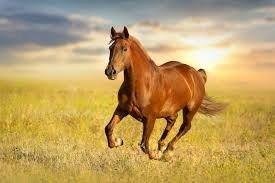horse presentation
Since the horse emerged about 55 million years ago, it has undergone many evolutionary changes. All domestic horses are members of an animal breed called Equus Caballus. Different horse-like species were born from wild atrocities that once roamed in Central Asia, the only example of which these horses succeeded in surviving today is the Mongolion wild horses, also called Przewalski. These horses were thought to have been consumed; but it was discovered that these horses lived in the Gobi desert in 1881 by a Russian explorer named Colonel Nikolai Przewalski. Today, these animals are found in well-organized nature parks. It is thought that these horses now live wild. Przewalskide is missing 2 chromosomes from domestic horse chromosomes and is a separate horse race. There are 5 more species of horse family that live today. Flat Zebras, Mountain Zebras, Grevy Zebras, African Wildfires and Asian Wildfowls. Some species have been extinct a very short time ago. "Guagga", a zebra-like animal living in South Africa, was destroyed by hunters in the 1870s. These 6 species can also mate with each other. However, since every number of chromosomes is different in each of the cells, some of the matings are congenital. (For example, we can give a male donkey and a diaper formed by the mating of the dog.) Somehow, the pups formed by the combination of Przewalski horses and domestic horses are born. Przewalski horse or Mongolian horse; B.C. They are the first horses domesticated in the Russian steppes around 3,000. The first Equus, after nearly 60 million years of evolution, has become the forerunner of today's horses.
